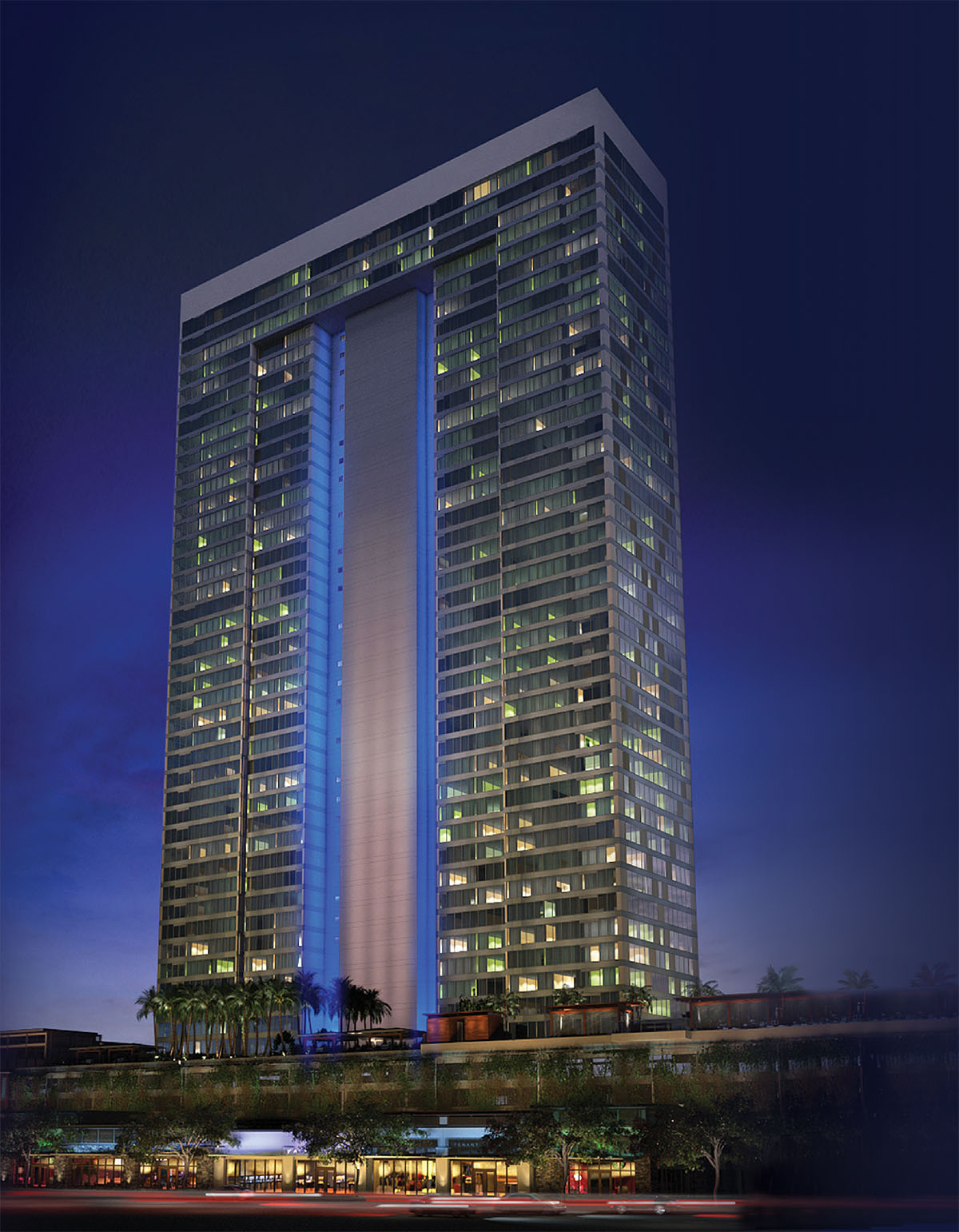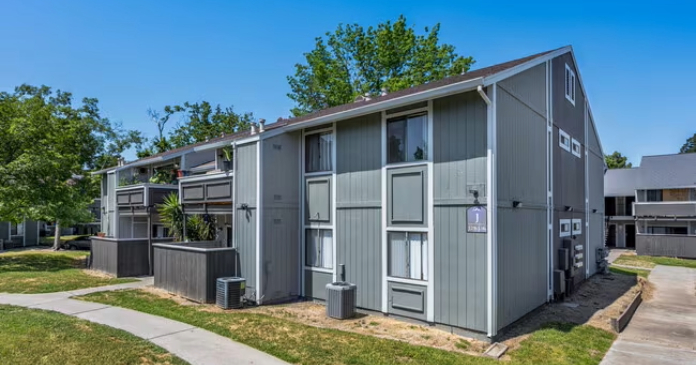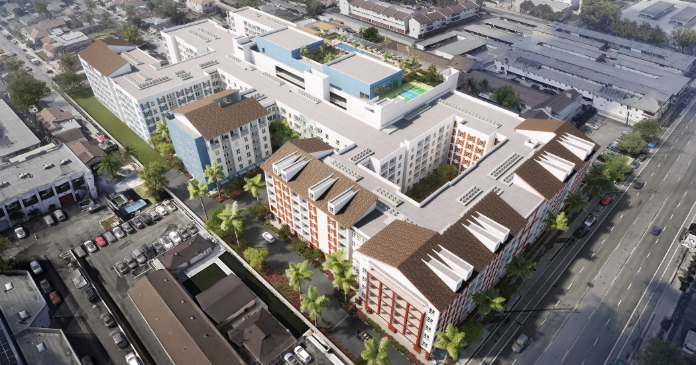Land is sacred in Hawaii. And, going vertical makes perfect sense on an island where real estate is in finite supply. The success of the pre-sales at Pacifica Honolulu, where a ground blessing ceremony was held last March, affirms the demand for urban living and could be a sign that the economy is recovering.
“I think we hit the market at a good time,” said the president of mixed-use developer OliverMcMillan’s Pacific Rim division Dan Nishikawa, who is overseeing the company’s transformation of a long-stalled eyesore into a 48-story community enhancement. Nishikawa, who joined the company about two-and-a-half years ago and was promoted just last month to director of acquisitions for the 32-year-old San Diego-based firm, oversaw acquisition of a lien from general contractor Hawaiian Dredging Construction Company last spring for $25.9 million, the first step in the take-over of the project from original developer KC Rainbow II, who failed to finish it. A final contract with KC Rainbow for ownership of the deal was signed last October.
And, while the sales were brisk this spring, resulting in 137 non-refundable deposits of 10 percent of the price of the condos that range from the $400,000s to the $700,000s for units that average 900 sq. ft. and will be ready for occupancy by August of 2011, the route to the success of that 430,200 sq. ft., 489-unit project was littered with obstacles.
“The good news for us was that it wasn’t really publicized,” said Nishikawa of the troubled property, where construction stopped as the 27th floor of the twin oval towers was poured in fall 2008. The developer lost his construction loan and pumped $60 million of his own money into the project—then called Moana Vista—to keep it afloat, but time was not on his side. Construction stopped in October, and, although the owner then hoped to revive the effort, he finally was forced, by a pending foreclosure, to give up on the project.
“That worked to our advantage because he never hired a broker to seek buyers and we actually found out about the deal through an outside source from the previous developer side,” said Nishikawa, explaining that a select number of people were chasing the deal that he learned about through his connections in the islands.

That was the good news. On the difficult side of the deal, halted construction projects always present problems and the transaction involved numerous unpaid contractors and subs and liens. Hawaiian Dredging had the largest claim against the project. It’s foreclosure lawsuit, filed in April 2009, claimed KC Rainbow owed the company $30.8 million. The lawsuit followed a mechanic’s lien filed by the dredging company, in which the contractor claimed it was owed $36.9 million. Architects Hawaii Ltd, designer of the condo community’s twin oval towers, claimed a debt of $683,876 in fees and interest, while structural engineering firm Lincolne Scott filed a mechanic’s lien for an unpaid bill of $94,823 that winter, followed in the spring by another such lien for just under $10,000 filed by Keko Investments—all local enterprises. In October 2009, OliverMcMillan bought Hawaiian Dredging’s lien and acquired KC Rainbow’s interest in the property a couple of months later.
In addition to that legal morass, the project didn’t have a very good reputation in the market, Nishikawa said. But, he and his team we were able to tap into the company’s expertise in re-branding and design, in construction, legal issues, re-entitling and access to financial resources, primarily First Hawaiian Bank and the Hawaii Community Development Authority, which also is the redevelopment authority for the area, to turn KC Rainbow’s failure into a major success story.
Although the opportunity to purchase the stalled project was kept quiet, Pacifica Honolulu’s Cinderella story turned into a media event, further fueling buyers’ desire for one of the condos.
The sales strategy for the condos in the re-designed, upgraded building that eventually will house 365 market-rate units and 124 condos that will be affordable to families in the area’s median-income bracket, was two-fold, said Nishikawa.
“Number one was to recapture as many of the previous buyers as we could and the second sales strategy was to come out with pricing that was below current resale pricing, so that we were the best alternative for new home buyers.”
Of the 175 original buyers, whose reservations were canceled in September 2009 by the project’s unsuccessful developer, 108 signed purchase contracts with the new owner. As of mid-July, 250 of the 375 market-rate units at Pacifica Honolulu were under contract with non-refundable deposits of 10 percent.
“We had a very focused advertising campaign with the Honolulu Advertiser newspaper and generated press releases prior to sales, announcing our acquisition, announcing the fact that we were going to be going to be selling, in addition to our more traditional advertising. We actually did more newsworthy press releases that got people excited and pumped up and ready for our sales event in February,” which generated a lot of good TV coverage of the rebirth of the notorious failed project.
And that kind of excitement was critical to the company’s ability to obtain financing for construction of the project because First Hawaiian Bank, also the preferred lender for the condos, had a pre-sales requirement for the $50 million construction loan that closed in April, allowing local general contractor Ledcor Construction Hawaii LLC to re-start the project that will cost around $100 million to complete.
While the deal to purchase the property still was in negotiations, Nishikawa’s team was working with the redevelopment agency to get approvals for some plan changes. “Even though we closed in October, we were working with the redevelopment agency on entitlements, while we were in the due diligence process from about May through July, when we actually gained some entitlements that we needed,” he said.
Development partners Architects Hawaii and San Diego-based Jules Wilson and Honolulu-based Philpotts interior designers worked with Nishikawa’s team to make some major changes, inside and out, to the original plan for the high-rise. The one-, two- and three-bedroom units that replaced the previous developer’s plan for all twos, will occupy 41 stories above five floors of parking. The 31st floor was poured in early July. “So, we’re up and going,” Nishikawa said.
And another major alteration in the deal structure was the approval to change the 124 units previously designated as median-income rentals to 124 affordable for-sale units, which will be available for purchase by median-income households in September.
Enhancements to the community design include addition of 4,000 sq. ft. of amenities on a fifth-floor recreation deck. A 3,000 sq. ft. fitness center was added to the mix, along with a 20-seat movie theater with a 96-inch screen and a private screening room with banquette seating for smaller audiences, a hobby room that will be a playground for painters, woodworkers, photographers and other craft-handy residents, a dog park, barbecue and pool cabanas will upgrade the look and feel of the project, he said.
“The retail component along the major street was another way to enhance the look of the building and we totally redid the main entrance and the lobby,” said Nishikawa. The new lobby design evokes the atmosphere of a library cafe, where people meet, greet and socialize.
The project not only marks OliverMcMillan’s entry into The Aloha State, but also provided the developer with an opportunity to show not only Hawaii, but, also the rest of the nation that the company is able to step up and do very complicated transactions in a hurry, said Nishikawa, who currently is looking at several other promising multifamily and mixed-use opportunities in Hawaii, as well as on the mainland.
Author Peggy Shaw
















